

William Stopford
The cars axed in 2025 that we'll miss the most
23 Hours Ago
The front-driven GX is the most affordable new-gen Kluger on sale. There’s plenty of goodness if you’re after a budget seven-seater.
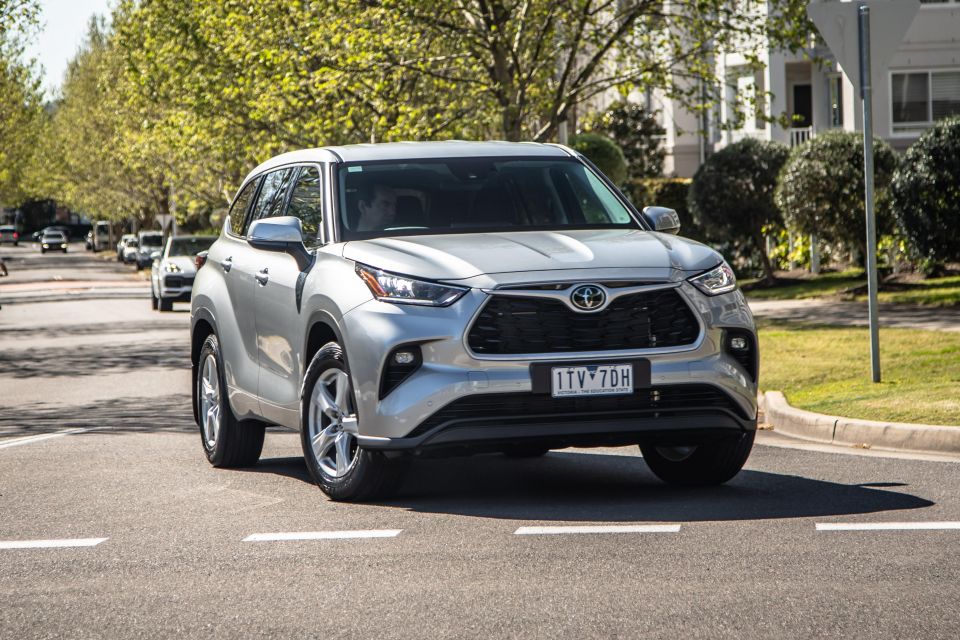
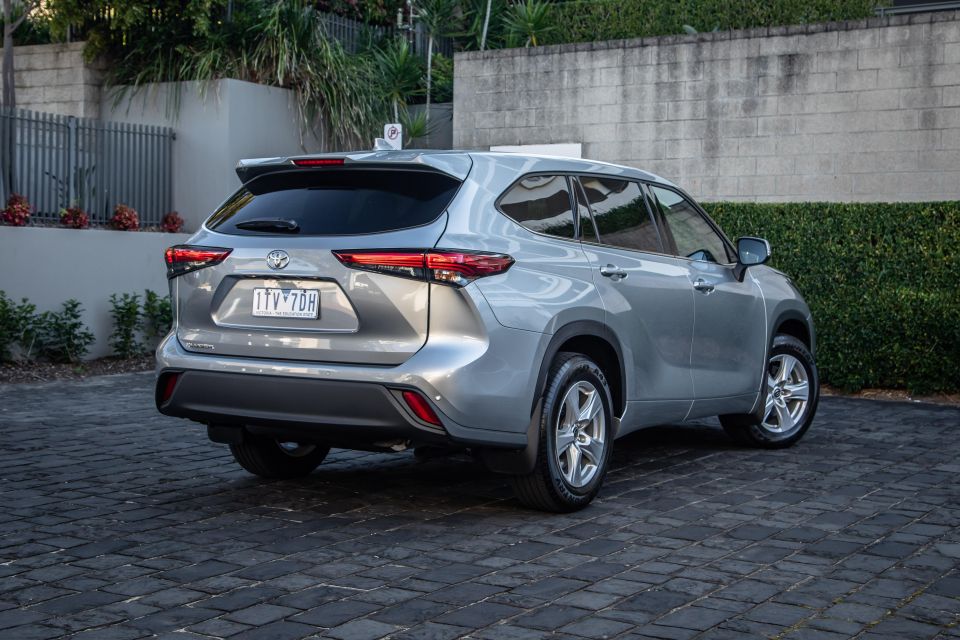

Journalist
New from
$44,850
excl. on-roads

Journalist
New from
$44,850
excl. on-roads


Journalist
New from
$44,850
excl. on-roads

Journalist
New from
$44,850
excl. on-roads
Quickly see how this car stacks up against its competition. Select any benchmark to see more details.
Where expert car reviews meet expert car buying – CarExpert gives you trusted advice, personalised service and real savings on your next new car.
The Toyota Kluger has been hot property with Aussie buyers for quite some time and the vastly-revamped fourth-generation is quickly proving the success hasn’t seen Toyota rolling the arm over and resting on laurels.
We’ve had a few versions through the CarExpert garage of late with many signs this new seven-seater is a good thing.
Then there’s the basic, petrol, front-driven 2022 Toyota Kluger GX V6 here on test. It’s the humblest iteration and perhaps the toughest package to get convincingly right, obviously, because it can’t be ruinously expensive.

The petrol GX is not only the obvious Kluger candidate for tighter budgets, it’s perhaps the variant that might lure you out of small or mid-sized SUV options with the prospect of big size for not a lot of coin. It’s a way to, say, pry growing families out of a RAV4 or, importantly for Toyota, other carmakers’ machinery.
The basic Kluger must present lots of metal, glass and rubber for the money. That’s the key pitch. But prospective buyers clearly must weigh up the compromises of what’s missing when choosing for a relatively affordable plus-sized prospect.
So, where does the buck-banging Kluger compromise the most, if anywhere? And how much of its inherent goodness and improvement – much of it hidden under the skin – is maintained despite its budget-savvy nature? Let’s find out.
The 2022 Toyota Kluger GX FWD clocks in at $47,650 plus on-road costs, or a little over $52,000 drive-away without options. As outlined in our price and specs story, this new generation’s tip-in point represents a price rise of $2800 over its predecessor.
From here, the GX steps up four grand to $51,650 in V6 all-wheel drive guise and you’ll need a further $2500 to swing into the GX AWD Hybrid ($54,150). If the V6 FWD format suits and you’re after nicer appointments, the GXL mid-ranger lays on more kit for its $56,850 ask before on-roads.
Cross-shopping within Toyota’s showroom, there’s the ute-based diesel-powered Fortuner GX at $49,080 that sacrifices some urban practicality for more go-anywhere capability. If you don’t need the seven-seat roominess, similar money slips you into any (smaller) RAV4 you like, such as the adventure-ready Edge ($48,915) or the quite technically-different Cruiser AWD Hybrid ($46,415), both ostensibly flagship versions of that model line.
Competitors of the unibody front-drive petrol variety include the base Hyundai Santa Fe ($44,700), Kia Sorento S ($46,850) and Mazda CX-9 Sport ($45,990). You’ll need to pry another $10,000 out of the piggy bank to opt into the ground floor of Hyundai’s Palisade (from $55,000).
There are plenty of accessories on offer, from tow kits to cargo carriers, though ostensibly the only option is premium paintwork that, outside of no-cost black, wants for $675 in any one of seven available optional finishes.
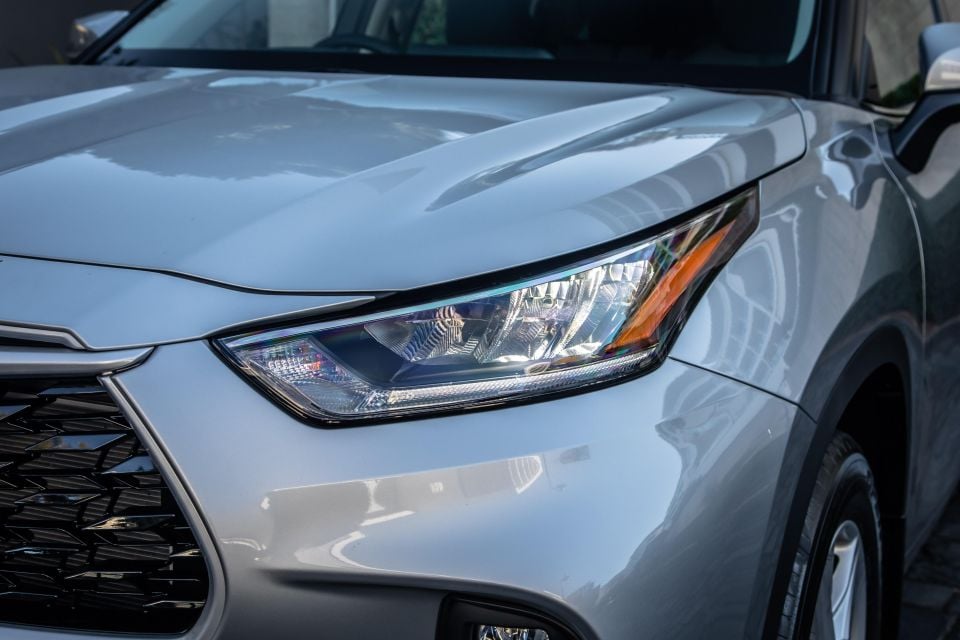
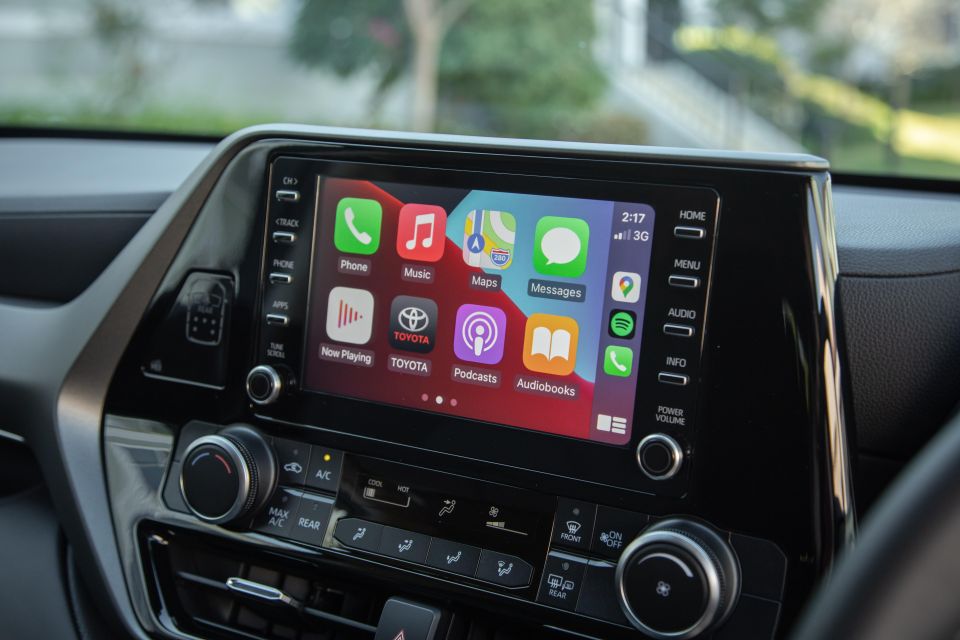
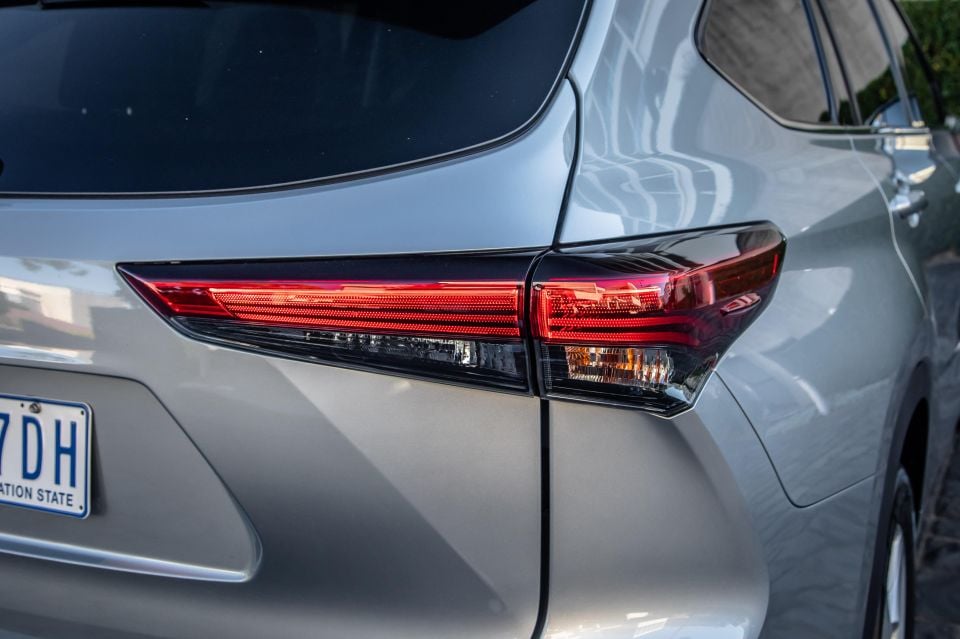
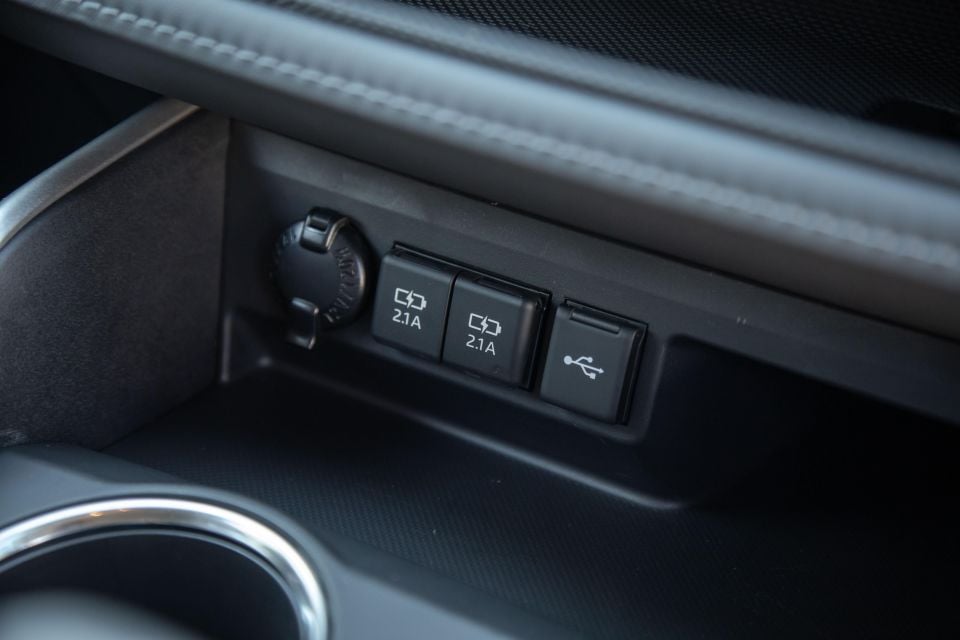
Buy your new car without the stress. It's fast, simple and completely free.

Great service from Travis and team, second time I have used this business would not hesitate to recommend them to anyone
Craig C.
Purchased a Ford Ranger in Sunshine Coast, QLD
CarExpert helped Craig save thousands on his Ford Ranger, now let us save you on your next new car.
Find a dealThe GX features a decent level of standard equipment for a seven-seater tipping in at under $48,000.
Outside, the base Kluger gets 18-inch alloy wheels, automatic ‘Parabola’ LED headlights with auto high-beam, LED tail lights and daytime running lights, front and rear parking sensors, a reversing camera, keyless entry and go, heated power-folding mirrors, rain-sensing wipers and rear privacy glass. Adaptive cruise control is also standard.
Inside, the GX gets cloth seat trim and mechanical seat adjustment, a 4.2-inch colour driver’s screen, manual two-zone air-con (Hybrid versions get auto three-zone climate control), five USB outlets (four for power, one for connectivity), and dual 12-volt outlets and a sliding second-row seat bench.
Infotainment is an 8.0-inch colour touchscreen system with DAB+, six-speaker audio and wired Apple CarPlay and Android Auto. Proprietary sat-nav is only available on the mid-grade GXL and flagship Grande.
For full details on the 2021 Kluger range check out our detailed pricing and spec story

The new-generation Kluger earned a five-star ANCAP rating from assessment conducted in June 2021.
The range scored 90 per cent and 88 per cent for adult and child protection respectively, with 76 per cent for vulnerable road user and 82 per cent for safety assist. See our news story here for the full deep dive.
Standard safety features include:
The seven airbags, include a driver’s knee bag and full three-row curtain coverage – though it lacks a front-centre inflator – as well as ISOFIX and top-tether child seat anchor points for the second row of seating.
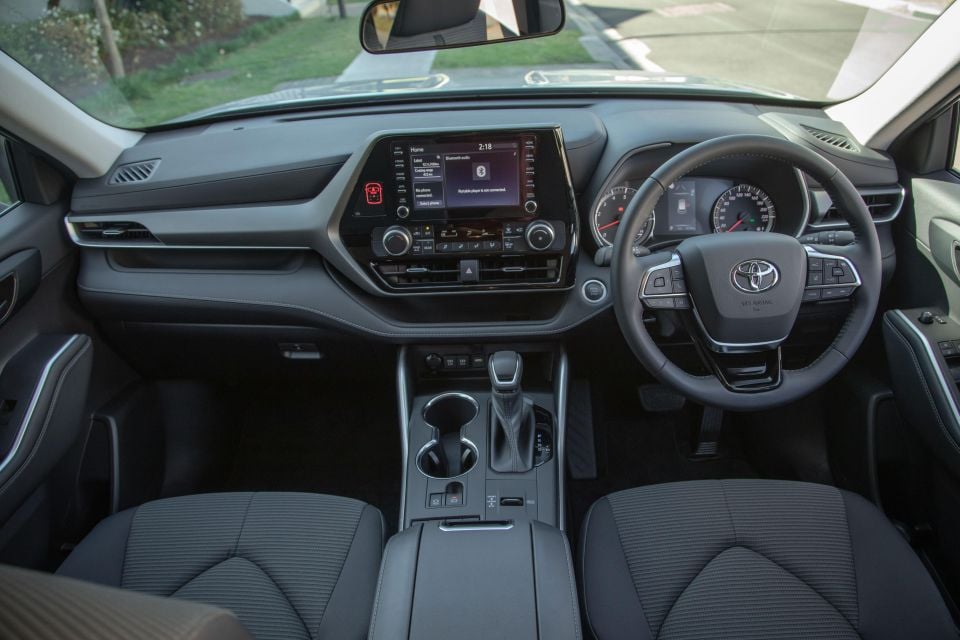
The new Kluger is welcoming. It’s easy to climb into and out of, there’s an airy ambience once you’re aboard, and there’s plenty of room to move once you’ve settled in. In GX trim, it offers a lot of accommodation for the money.
The general design is a mix of modern Toyota flamboyance tempered to a large extent by tame colourisation. Material choice is typical for the marque, which is solid and not overly fancy, though the Kluger, even in GX trim, benefits from nice flourishes such as a trimmed dash and soft-touch surfaces where you’d otherwise expect hard, cheap plastic. It presents well enough and does feel too cost conscious in execution.
What is conspicuous is how small the 8.0-inch touchscreen appears in its huge housing. Sure, the US market gets a massive 12-inch screen on some versions but, in fairness, the smaller unit here isn’t out of place for a base model.

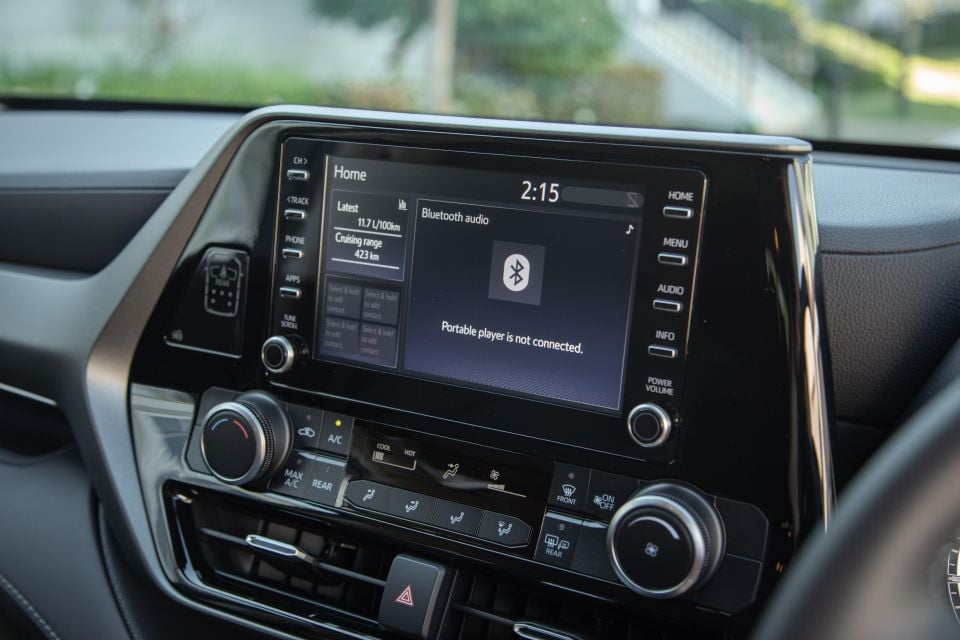
Thing is, the infotainment system isn’t much chop. For a model that has benefitted from wholesale improvement in many departments, the fact Toyota has stumped for a system that appears dragged out of the Dark Ages lets the cabin down.
It’s not sharp, nor fast, nor terribly intuitive to use. And it lacks some rival systems’ smarts, such as reverting to the last audio source used between start-ups, or logical radio or easily-accessible tone controls.
The shortcut buttons in the housing are handy but the lack of proprietary sat-nav might become an annoyance to regional owners who regularly venture outside the phone reception required for full Apple CarPlay or Android Auto navigation functionality.
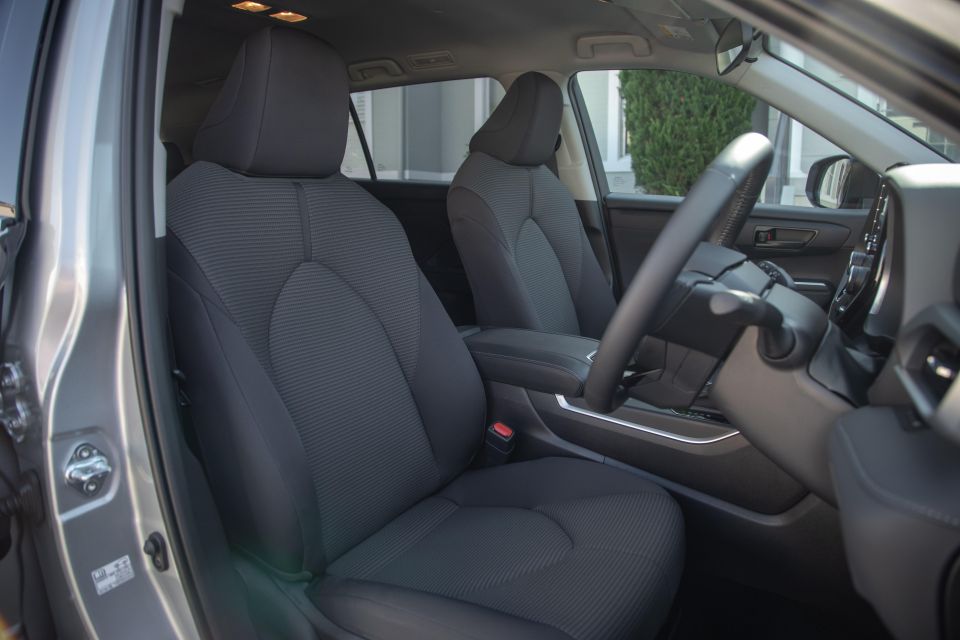
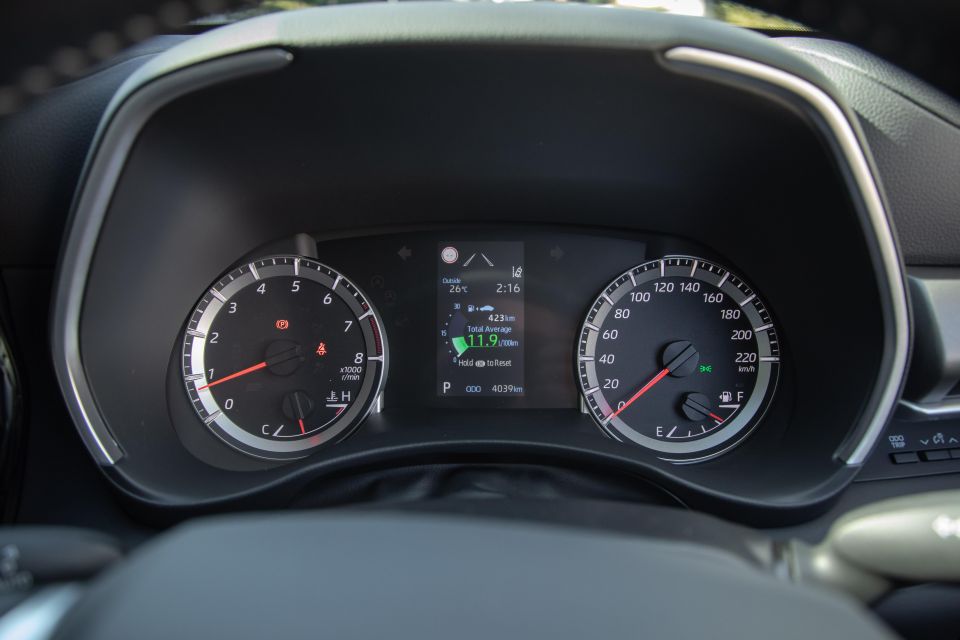

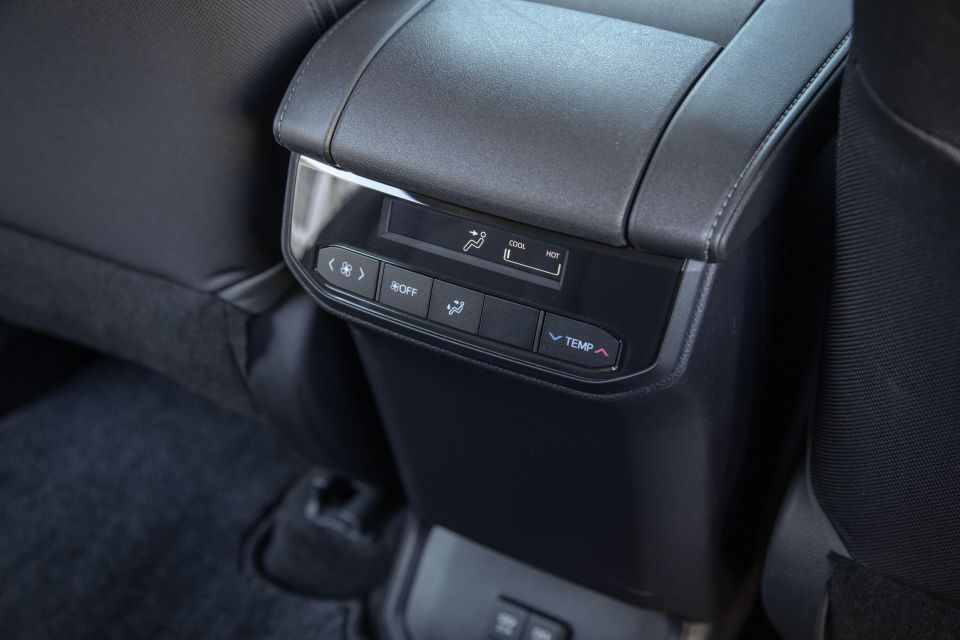
The seats are good, large and relaxed in contour with plenty of support in the cushion to make for comfy commuting. The large centre console and generous elbow room, too, allow ample room to lounge about during long-haul trips. On that, the four USB ports outside of the data port for smartphone mirroring is a thoughtful inclusion for families wedded on device dependency, for fair or foul.
Where the petrol V6 GX, specifically, loses out to the hybrid is that its manual two-zone air-con isn’t nearly as fully functional as the three-zone climate control that the hybrid pinches (for some unspecified reason) from high-grade variants. It’s fine. It’s air-con.
It works – even if, like me, you tend to constantly fiddle with the settings to find the right temperature and airflow.
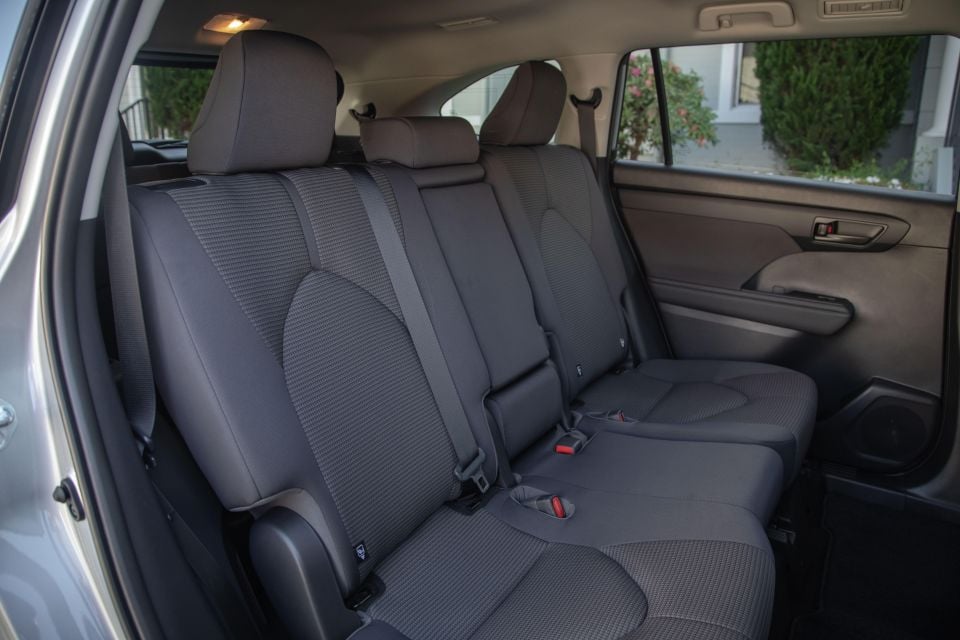
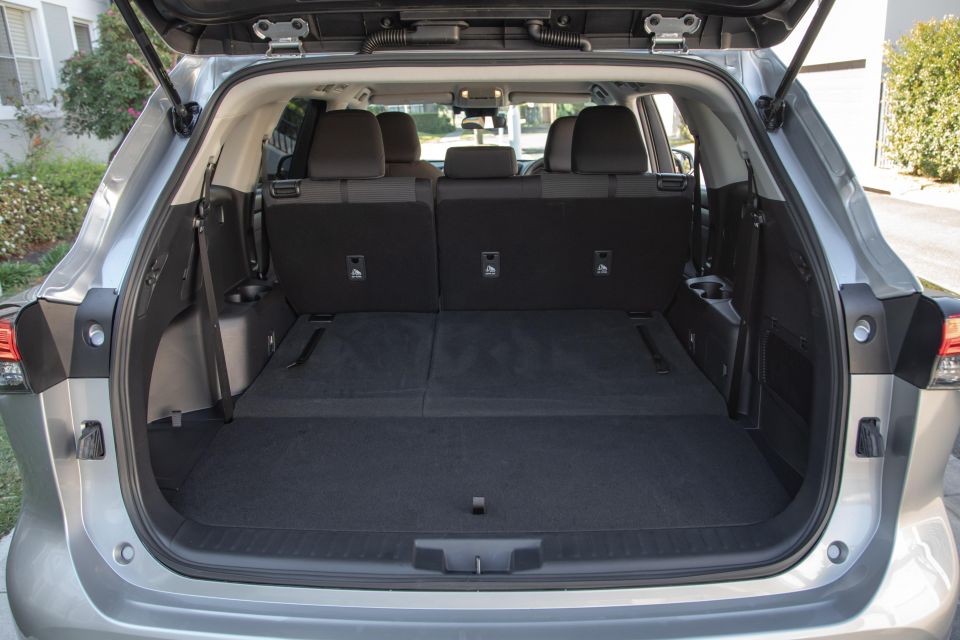

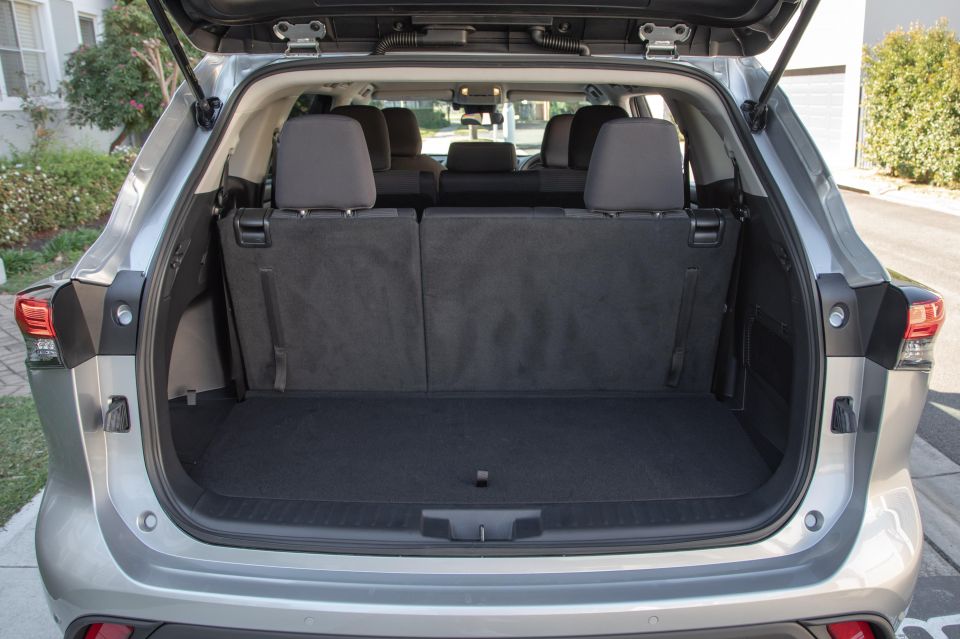
There’s six extra centimetres of wheelbase in the new Kluger with an added three centimetres of second-row slide adjustment to tailor legroom across the three rows of seats, and the second row makes for exceptionally roomy accommodation setting the bench rearward and treated as a five-seater. It’s certifiably adult-friendly and downright cavernous for small kids.
Perhaps expectedly, row three is best reserved for smaller occupants. The lack of headroom really limits it to an emergency-only prospect if you need to move seven adults in a pinch.
Access by folding the 40:60-split second row is reasonably easy, while the third-row seatbacks stow for a nice flat load area offering a decent 552 litres of boot space from its 241L as a seven-seater. Converted to a surrogate two-seat van, the Kluger liberates a fulsome 1150L.
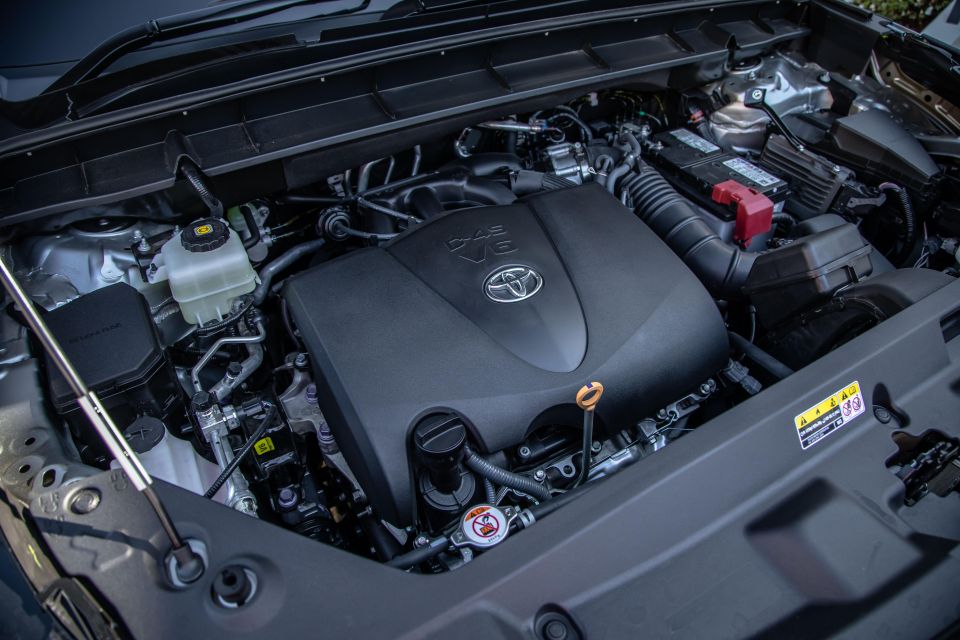
Petrol versions of Kluger are powered by a naturally-aspirated 3.5-litre V6 petrol engine outputting 218kW at 6600rpm and 350Nm at a fairly high 4700rpm peak. It’s backed by an eight-speed automatic transmission and a choice of front-wheel drive, as tested here, or all-wheel drive.
The front-drivers are, at 8.7L/100km for claimed combined consumption cycle, slightly more frugal than the AWD (8.8L-8.9L), though the petrol V6 models aren’t nearly as thrifty as the hybrids and their 5.6L/100km advertised figure. However, where petrol-electric variants require 95 RON fuel, the petrol V6 versions run happily on 91 RON.
One test, we saw consumption fluctuate quite a bit to driving conditions, between 11L for the stop-start urban stuff, then quickly dropping to high eights with some highway driving mixed in. Quite faithful to its claim, then.
At 1885kg (kerb), the petrol FWD GX and GXL are the most lightweight of the range – over 200kg lighter than the hybrid Grande. All Klugers, though, offer up to 2000kg of braked towing capability.

Disclosure time: prior to time in the front-driven GX petrol Kluger, I’d just come out of a week in the hybrid AWD.
Unsurprisingly, the similarities are vast and the differences are, in many areas, nuanced. But the twins do drive differently enough to matter.
The V6 is a good unit. Despite the high revs point for peak torque, it offers plenty of pull from the depths of the rev range without any sense of strain, complemented with nice, crisp throttle response typical of its naturally-aspirated design.
It’s nice and linear as revs rise, too, with enough energy in its stride to negate the need to go chasing the redline. As we opined in the launch review, there’s something pleasingly lively about the V6.
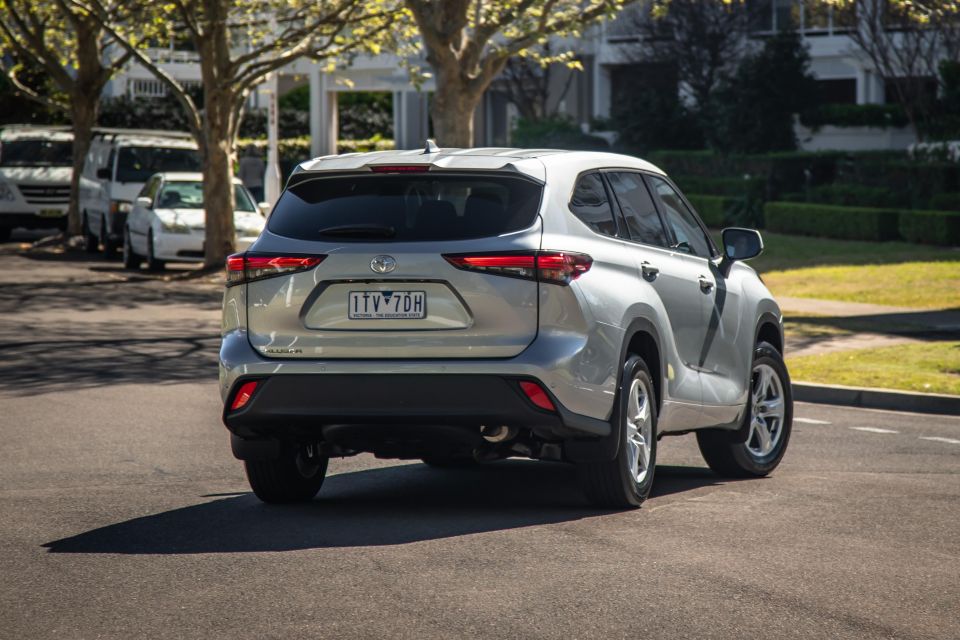
That said, its quiet and refined nature is paired well with the eight-speed auto that’s one of the smoother shifters I’ve sampled of late in big family haulers. In fact, it’s more composed than a good many premium SUVs going around the traps that strangely suffer too many nips and shunts.
It does like a drink, returning around-town fuel consumption in the 11L/100km range. The flip side, though, is its leisurely nature brings with it a nice luxury sheen around town and most notably out on the open road where it asserts itself as quite the fine long-haul cruiser.
In comparison, the front-driven GX feels lighter on its feet than its heavier hybrid twin, if in shades. But on its own merit, the mechanically-leanest Kluger is impressively lithe for its size and weight.
The steering is light and direct, it points obediently and has a degree of body control that hones out any wallowy and washy behaviour. Some big SUVs feel overly cumbersome and laborious, but the Kluger certainly isn’t one of them.
Toyota has done a fine job crafting its large crossover on the TNGA platform. From refinement to ride and handling, this new Kluger has really upped the game for the breed, feeling more polished and more premium in net effect.
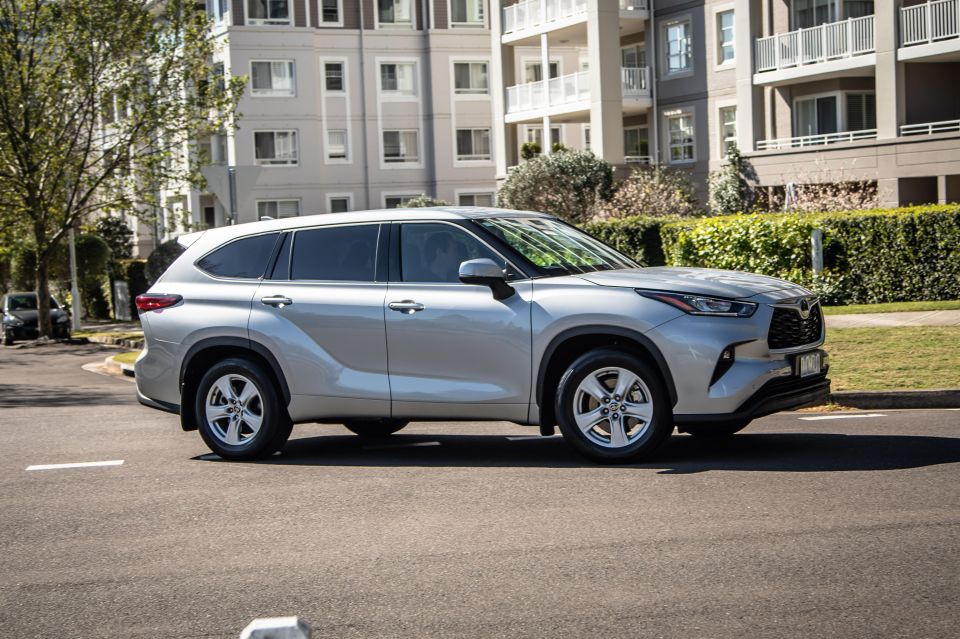
The ride quality itself is good, middling in terms of firmness if striking a nice balance of compliance and firmness. If there’s one slight complaint, it’s that the fat-sidewall 18s slap more than they should across sharp road imperfections, and dialling out some faint suspension noise would up the Kluger’s already impressive refinement.
It does feel, from behind the wheel, as large as it looks and demands some care parking despite the nice inclusion for parking sensors at both ends and reversing camera with a resolution that leaves a bit to be desired.
Compared to the US market for which this vehicle is primarily designed, the Australian urban landscape presents tight multistory parking lots so frequently in the daily driving experience. If you’re timid in reversing into tight spots, you should seriously consider the sheer size of the big Toyota – or any large seven-seater – before you buy.
As I found with the hybrid version, the V6’s assistance systems are, for the most part, well-calibrated and transparent enough to avoid regular annoyance, bar perhaps the lane departure smarts that can trigger well below 60km/h, often in poorly line-marked backstreets and the like. No biggie.
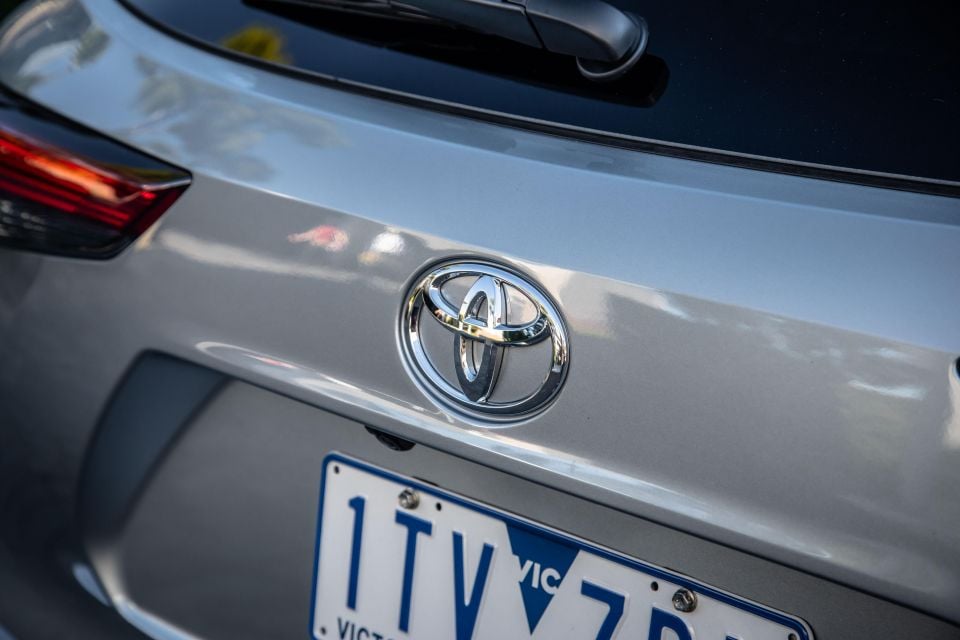
The Kluger range comes with a five-year, unlimited-kilometre warranty.
Toyota offers a further two years of engine and driveline surety if you stick to your annual servicing schedule.
Servicing outlay is very competitive at just $250 per visit for the first five services, each with a 12-month or 15,000km interval.
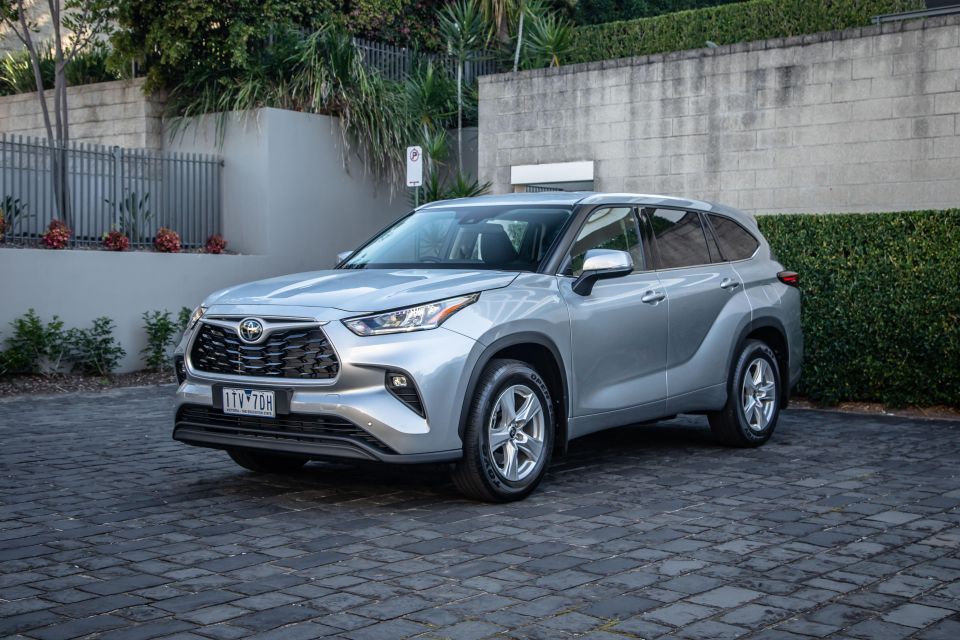
Where expert car reviews meet expert car buying – CarExpert gives you trusted advice, personalised service and real savings on your next new car.
The paint might still be drying on the new Kluger’s presence in Australia, but it’s already asserting itself with a reputation as a quality unit. It’s a fine step forward from its predecessor, especially in its on-road experience.
Two things in particular do strike about the most basic version we have on test here.
First is that, in terms of equipment, it’s impressively specced for the money. Opting for such a large vehicle on a tight budget, you’d expect stuff such as auto power-folding mirrors might find their way back into the parts bin – not so. And while GX trim does hold back on proper niceties, our tenure with the base version left us feeling like it hasn’t really trimmed many corners at all.
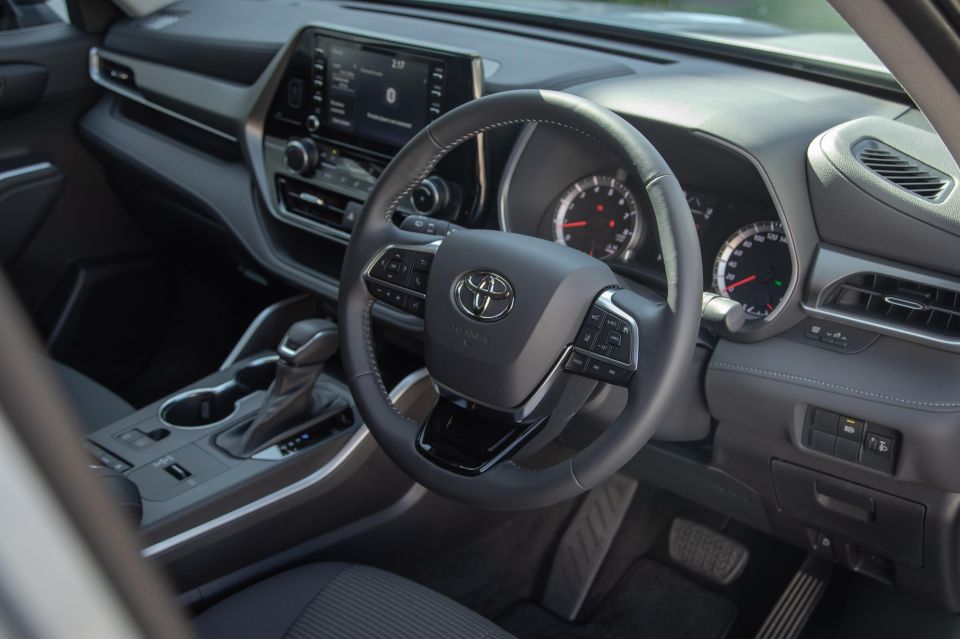
In fact, given you get synthetic leather, rather than real stuff, in the much pricier GXL, it’s fair to question where moving to the mid-grade represents enough dividend for its extra splurge. Value for money is certainly a strong point here.
The second is that opting for the base front-driven V6 isn’t really much of a downgrade in real-world respects. Give it berries and there’s a faint whiff of torquesteer, but driven how most owners will 99 per cent of the time, there really are no downsides against the AWD.
That said, it’s worth the shout that if you do frequent broken terrain regularly, or want that rainy-day surety, the all-paw version brings some extra torque shuffling tech for what’s not a huge step-up in outlay.
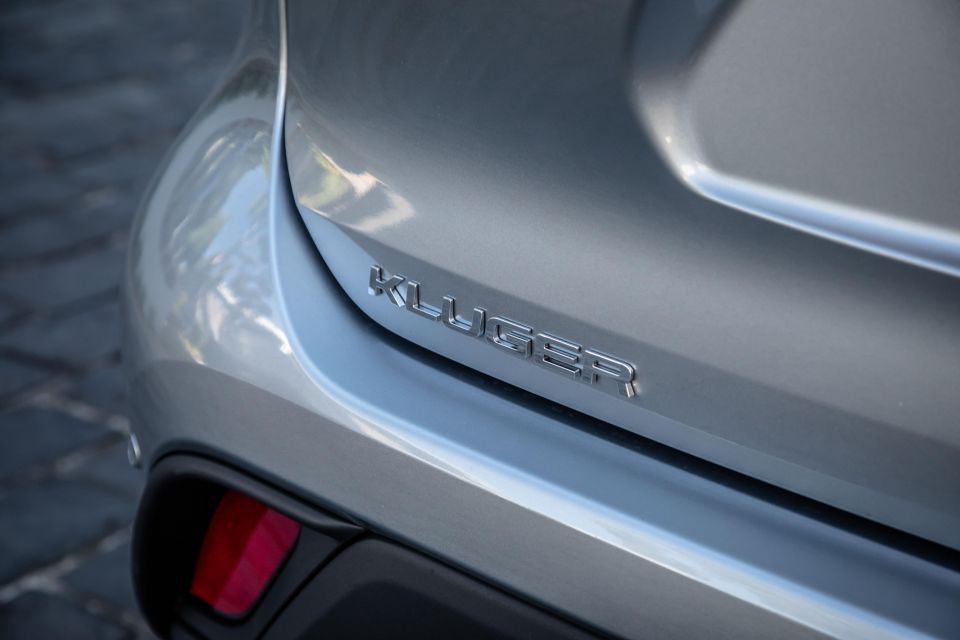
Click the images for the full gallery
MORE: Everything Toyota Kluger
Where expert car reviews meet expert car buying – CarExpert gives you trusted advice, personalised service and real savings on your next new car.


William Stopford
23 Hours Ago


Matt Campbell
1 Day Ago


William Stopford
2 Days Ago


CarExpert.com.au
5 Days Ago


Max Davies
6 Days Ago


Damion Smy
7 Days Ago